Describing position and direction.
Position is where something is.
We use directions and turns to get from one place to another.
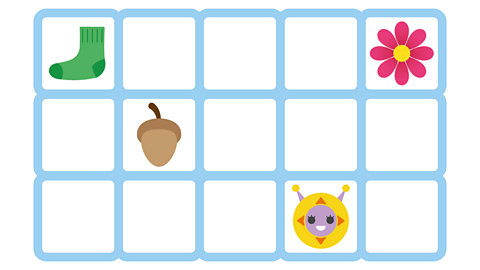
Position
When we are describing where something is, we use keywords such as:
- top
- middle
- bottom
- below
- above
- in front
- behind
- on
- under

Example 1
Look at the picture below. Can you fill in the blank using the terms we've just listed?
The cup of pencils is ____ the table.
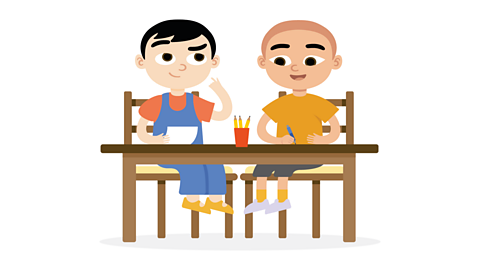
âś“ The cup of pencils is on the table.
The pencils have been moved, how would you describe their position now?
The cup of pencils is ____ the table.
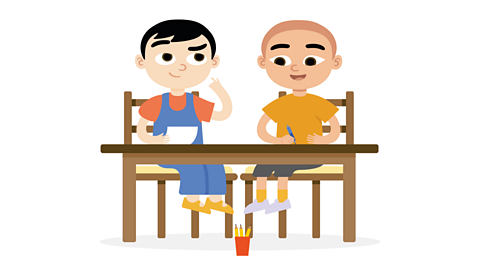
âś“ The pencils are under the table.
Left and right
If something was next to you, how would you describe which side it was on?
You could describe it as being on the 'left' or the 'right'.
Use your hands to help you work out if something is on the left or the right.

Example 2
Let's practise describing position.
Fill in the blanks.
(i) The bottle is above the ball.
(ii) The ________ is below the ball.
(iii) The lunchbox is to the left of the rucksack.
(iv) The ________ is to the right of the ball.
(v) The________ is in the middle of the grid.
(vi) The ________ is between the lunchbox and the clock.
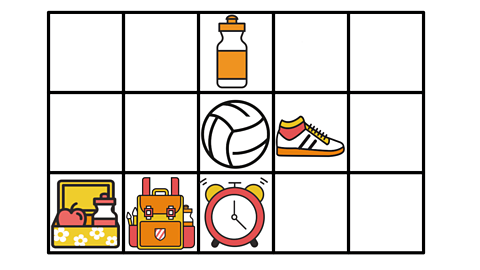
(i) The bottle is above the ball.
(ii) The clock is below the ball.
(iii) The lunchbox is to the left of the rucksack.
(iv) The shoe is to the right of the ball.
(v) The ball is in the middle of the grid.
(vi) The rucksack is between the lunchbox and the clock.
Direction
When we are giving directions we use keywords such as:
- up
- down
- forwards
- backwards
- left
- right
- quarter turn
- half turn
- clockwise
- anti-clockwise
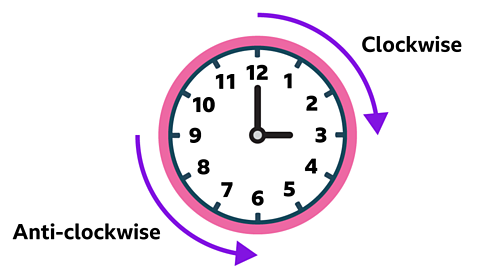
Clockwise and anti-clockwise
Clockwise is another way to describe a direction or turn.
Clockwise is a turn to the right as it follows the hands of a clock and anti-clockwise is a turn to the left, the opposite direction of a clock’s hands.

Turns
We can also describe different turns when we give directions.
Look at how these triangles have been turned.

A full turn is turning all the way around and ending up in the same place that you started in.
A half turn is turning half way to face the opposite direction.
A quarter turn is turning left or right.
Activity 1
Activity 2
Karate Cats Maths game. game
Train with the Karate Cats to become an expert in addition and subtraction, multiplication and division, place value and more!

More on Movement
Find out more by working through a topic
- count1 of 4
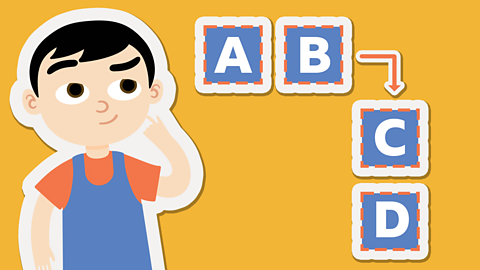
- count2 of 4
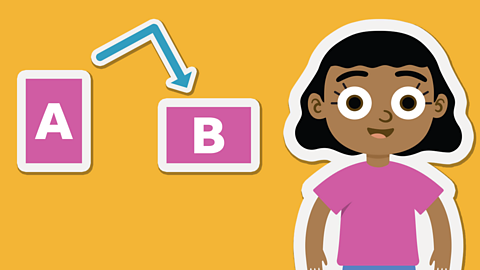
- count3 of 4
